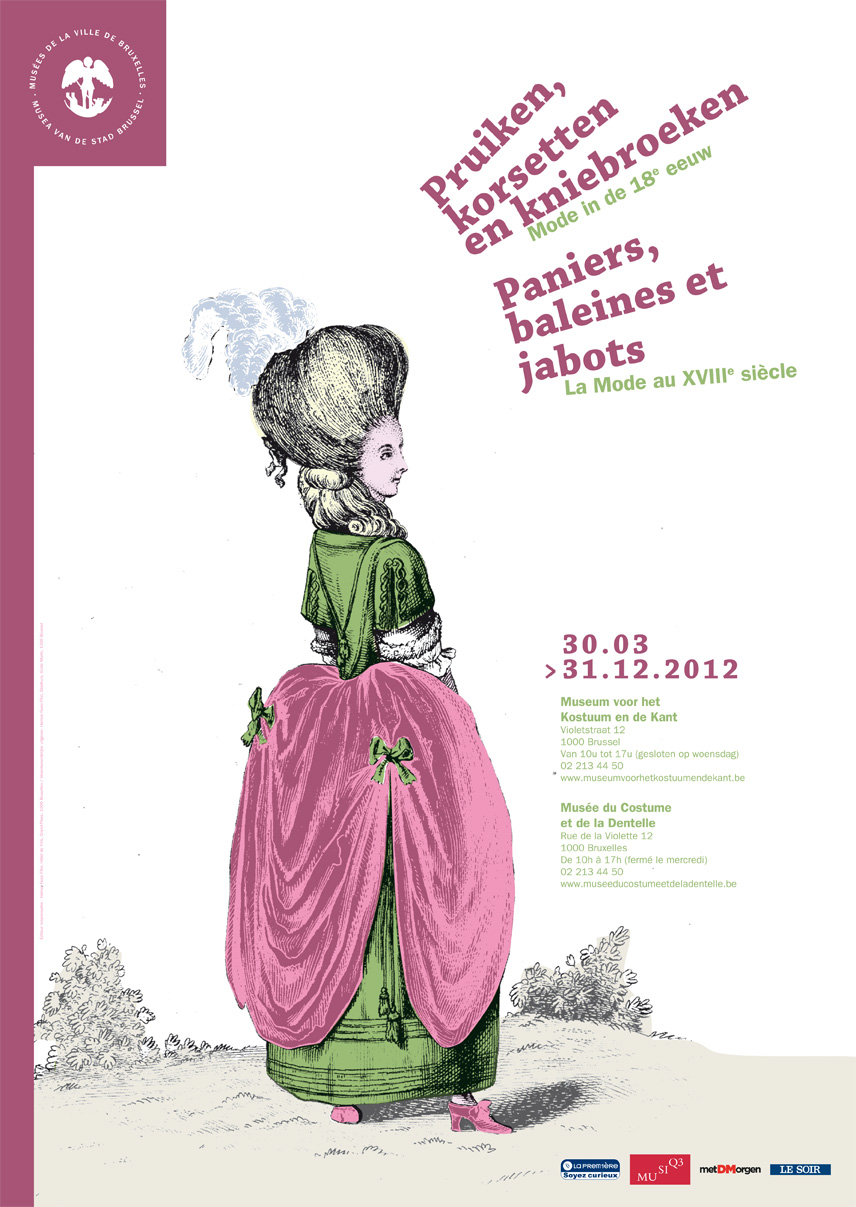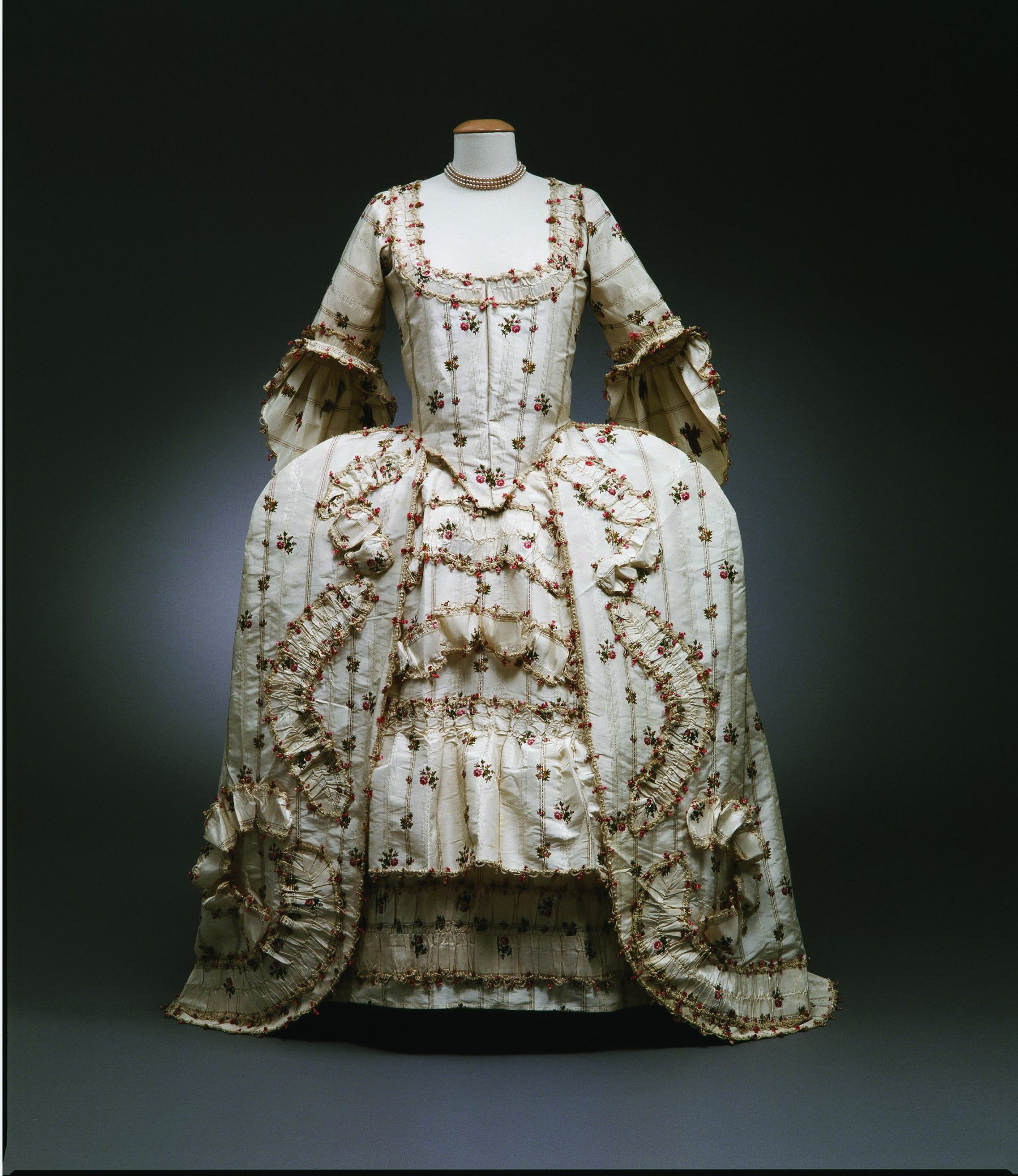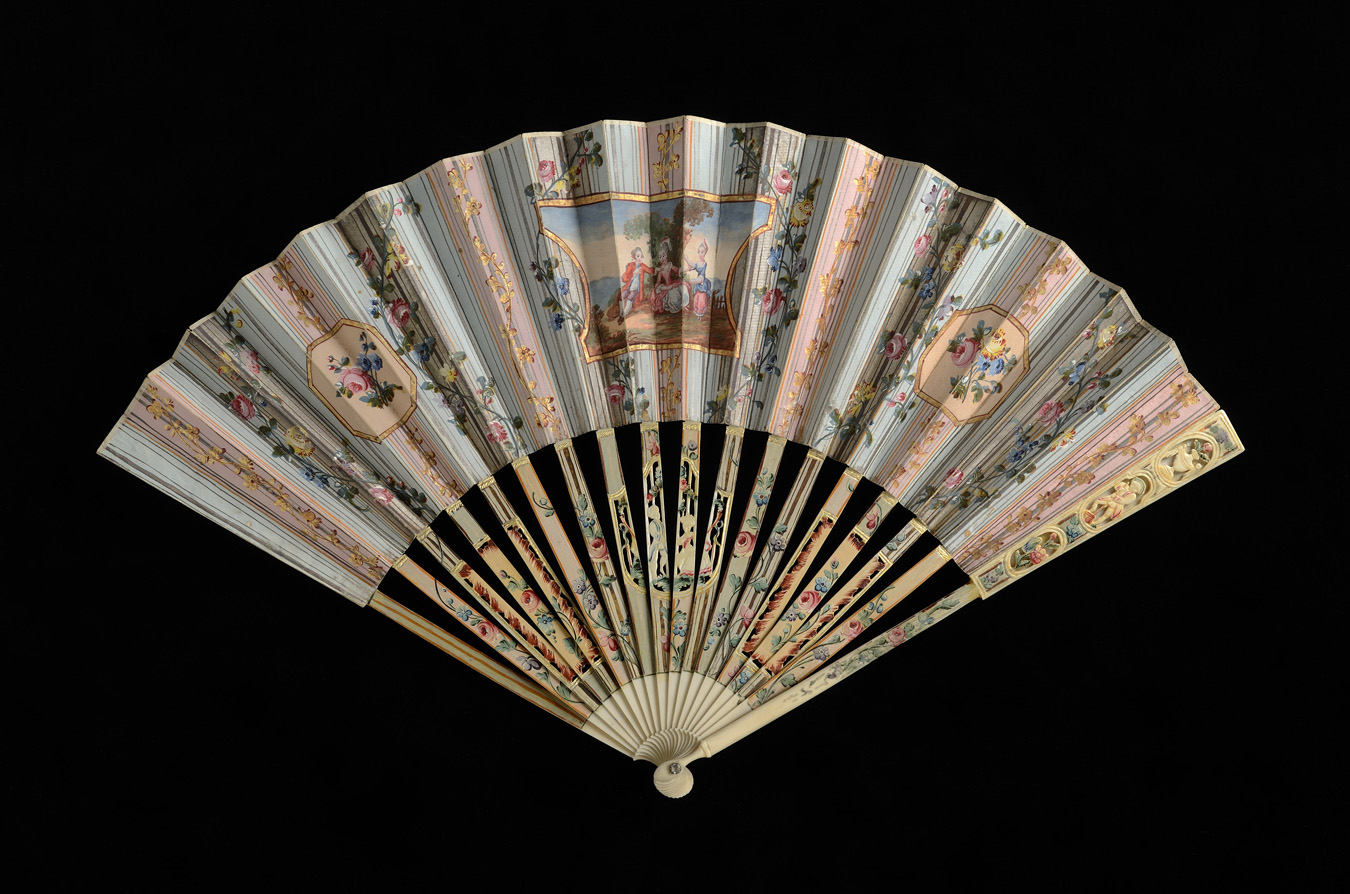If you looked inside a man’s or woman’s wardrobe in the middle of the 18th century, you would find pinafores, fans and voluminous dresses. During this period, France set the tone in terms of fashion. And it continued to do so for the next two centuries. In the 18th century, men wore French-style clothing and women wore a French dress.
The pieces from the museum’s collections showcased in the “Paniers, baleines et jabots” (Baskets, whales and ruffles) exhibition have been added to the inventory of the movable cultural heritage of the Brussels-Capital Region.
Discover our French-style dress of edged lampas with a green background and small herringbone patterns.






